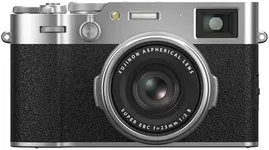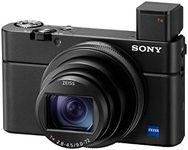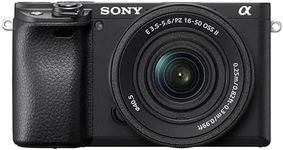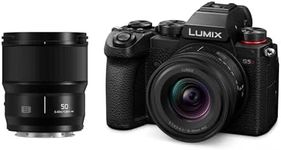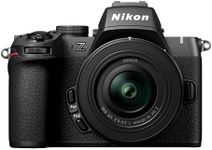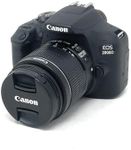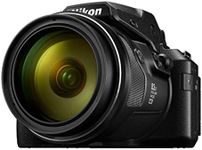Buying Guide for the Best Digital Cameras
Choosing the right digital camera can be a rewarding experience, as it allows you to capture moments and express your creativity. The key to finding the best camera for you is to understand your needs and how different specifications can meet those needs. Whether you're a beginner looking to capture family moments or an aspiring photographer wanting to explore your artistic side, knowing what to look for in a camera will help you make an informed decision.MegapixelsMegapixels refer to the resolution of the camera's sensor, indicating how many millions of pixels the camera can capture in a single image. This is important because higher megapixels can produce more detailed images, which is beneficial if you plan to print large photos or crop images without losing quality. For most casual photographers, a camera with 12-20 megapixels is sufficient. If you're a professional or need to print large formats, you might look for cameras with 24 megapixels or more. Consider your end use: if you're mostly sharing online, you might not need the highest megapixel count.
Sensor SizeThe sensor size in a camera affects the quality of the image, especially in low-light conditions. Larger sensors can capture more light, resulting in better image quality. Common sensor sizes include Full Frame, APS-C, and Micro Four Thirds. Full Frame sensors are typically found in professional cameras and offer the best image quality, especially in low light. APS-C sensors are smaller and found in many mid-range cameras, offering a good balance of quality and size. Micro Four Thirds sensors are even smaller, often found in compact cameras, and are great for portability. Choose based on your need for image quality versus portability.
Lens OptionsLens options determine the versatility of your camera. Interchangeable lens cameras, like DSLRs and mirrorless cameras, allow you to switch lenses for different types of photography, such as wide-angle for landscapes or telephoto for wildlife. Fixed lens cameras, like point-and-shoots, are more compact and convenient but less versatile. If you want flexibility and plan to explore different photography styles, consider a camera with interchangeable lenses. If you prefer simplicity and portability, a fixed lens camera might be more suitable.
ISO RangeISO range indicates the camera's sensitivity to light. A wider ISO range allows you to shoot in various lighting conditions, from bright sunlight to dim indoor settings. Lower ISO values (e.g., 100-400) are ideal for bright conditions, while higher values (e.g., 1600 and above) are useful in low light. However, higher ISO can introduce noise, reducing image quality. If you often shoot in low-light environments, look for a camera with a good high ISO performance. For general use, a standard ISO range will suffice.
Autofocus SystemThe autofocus system in a camera determines how quickly and accurately it can focus on a subject. This is crucial for capturing sharp images, especially in fast-moving situations like sports or wildlife photography. Cameras with more autofocus points and advanced tracking systems offer better performance. If you plan to shoot action or moving subjects, look for a camera with a robust autofocus system. For still photography or landscapes, a basic autofocus system may be adequate.
Video CapabilitiesVideo capabilities are important if you plan to use your camera for filming as well as photography. Key features include resolution (such as 1080p or 4K), frame rates, and additional features like slow motion or time-lapse. Higher resolution and frame rates provide better video quality and more creative options. If video is a priority, look for a camera with strong video specs. If you're focused on photography, basic video capabilities might be enough.
Battery LifeBattery life determines how long you can use your camera before needing to recharge or replace the battery. This is important for long shoots or when traveling. Cameras with longer battery life are more convenient, especially if you don't want to carry extra batteries. If you plan to shoot extensively or travel, consider a camera with a robust battery life. For occasional use, a standard battery life may be sufficient.
Build Quality and Weather SealingBuild quality and weather sealing refer to the durability of the camera and its ability to withstand harsh conditions. Cameras with robust build quality and weather sealing are ideal for outdoor and adventure photography, as they can handle dust, moisture, and temperature variations. If you plan to shoot in challenging environments, look for a camera with these features. For indoor or casual use, standard build quality may be adequate.

